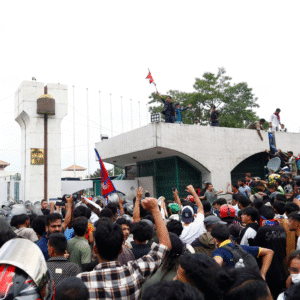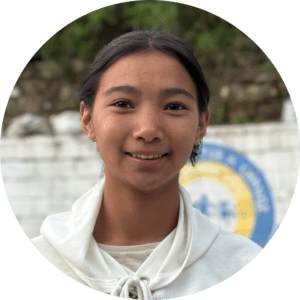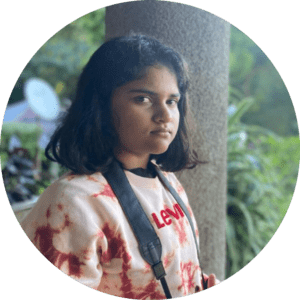Binita, 16, Kriti, 18, and Santoshi, 15, from the Nepali Newsroom report on the timeline of the recent protests in Nepal

Gen Z protesters outside the Federal Parliament in Kathmandu, Nepal, 8 September 2025.
Picture by: ZUMA Press, Inc. | Alamy
Article link copied.
October 24, 2025
Gen Z protests in Nepal: What happened
Last month, on 8 and 9 September, an extremely significant and unexpected event rocked Nepal when massive protests took over Kathmandu and other Nepalese cities. The protest was started and led by young people, mainly from Gen Z.
The protest was primarily against corruption, which has been a major issue in Nepal for decades. It began peacefully but quickly devolved into violence. It was one of Nepal’s most historic protests, bringing down the government led by Prime Minister Khadga Prasad Sharma Oli in just 27 hours. At least 70 people were killed and more than 2,100 injured.
Harbingers’ Weekly Brief
Monday 8 September
The protest started very simply. Some young people were discussing online how tired they were of the government’s corruption. They were frustrated because leaders were not doing their jobs honestly. People were dissatisfied with bad roads, poor education, overpriced healthcare and the misuse of our hard-earned taxes. So, a small group of youth, including students, workers, artists and social media users, decided to gather and speak up against the wrongdoings.
They planned a peaceful protest in Kathmandu near Maitighar Mandala, a famous spot for demonstrations. The protest was not organised by a political party. It was started by normal young people who used TikTok to share information about the protest. Within a few hours, thousands of people had shown up.
The protesters were carrying placards with the words ‘stop corruption’, ‘no more dirty politics’, ‘we want justice’ and ‘we are awake now’. Some wrote messages on their faces or hands. People were chanting slogans, singing protest songs and clapping hands. It was peaceful, powerful and full of energy.
But then things started to change. The number of people kept increasing. The police arrived and asked people to leave. Some refused because it was a peaceful protest. The police then started using batons to disperse the crowd.
Social media videos showed police hitting, chasing and shooting protesters, as well as arresting some of them.
Protesters were astounded that they had come with peaceful intentions but were treated as criminals.
According to the Kathmandu Post, just before 1pm on Monday 8 September, security personnel inside the Parliament building started firing on the crowd outside. Many protesters were injured and had to be taken to the nearby hospital, which was soon overrun with casualties. There weren’t enough beds and doctors had to treat the wounded wherever they could.
The Kathmandu Post reported on the dramatic events in the New Baneshwar area, where Parliament is located: “Some youths bared their chests, daring police to shoot. Others shielded themselves behind barricades. One protester, draped in the national flag, collapsed dead on the street. Ambulances could not keep pace. Smoke curled above the Parliament area. Young voices turned from chants to screams.”
By the end of the day, 19 people were dead.
Tuesday 9 September
The government imposed a curfew to control the chaos. However, irate Nepalis, due to the injuries and killings, decided to teach the government a lesson the next day. Noisy and violent protests continued across the capital and in other cities.
Several historical buildings, and public and private properties, including the main government administrative office (Singha Durbar), Parliament House, police stations and political leaders’ houses, including those of the prime minister and president, were set on fire.
Moreover, the leaders of political parties and cadres were brutally attackedand dragged out of their houses. Many were badly beaten by the agitated crowd. An eyewitness of the protest, Ramesh Dev Sunar, said, “Former five-time prime minister Sher Bahadur Deuba was beaten badly along with his wife, Arzu Rana Deuba, who was sitting foreign minister.”
By early afternoon, the prime minister KP Sharma Oli had sent a letter of resignation to Nepal’s president, Ram Chandra Paudel, and fled under army protection.
According to Abishek Rai, 24, who has followed Nepal’s turbulent political landscape for years, the events of early September feel like a seismic shift – a raw outburst from a generation that has been sidelined for too long.
“The protests led by the Gen Z youth weren’t just about anger. It was a desperate cry for a system that works for ordinary people. At their core, they were fuelled by corruption that has hollowed the nation,” he told Harbingers’. “Young people face sky-high unemployment and economic inequality.”
He added: “Social media exposed the lavish lives of politicians’ children, ‘nepo kids’, which further elevated the fury. The immediate trigger, though, was the government’s hasty decision to impose a ban on social media in early September.”
According to Rai, while the ban was framed as a security measure amid rising online criticism, it backfired spectacularly, cutting off the very tools Gen-Z used to communicate, and some even used it as a means to provide themselves employment.
“What started as peaceful online campaigns and small rallies swelled into mass demonstrations.”
Written by:

Contributor
Kathmandu, Nepal
Born in 2009 in Bajura, Binita Nepali studies in Budhanilkantha, Kathmandu, Nepal. She is interested in writing, teaching, singing and journalism and plans to study journalism in the future. She is part of our Nepali Newsroom’sIntermediate group and writes about social issues and human rights.
In her free time, Binita enjoys watching movies, dramas, dancing and singing. She is the first girl in her class and has contested in various activities such as quiz competition and games and has won prizes and awards.
Binita Speaks Nepali, English and Hindi languages.

Contributor
Kathmandu, Nepal
Born in 2010 in Sindhupalchowk District in Nepal, Santoshi studies in grade nine in Kathmandu, Nepal. She is interested in reading story books and plans to study medical science in the future. She is part of our Nepali Newsroom’sIntermediate group and writes about science.
In her free time, Santoshi enjoys reading books, playing badminton and dancing. She is the first girl in her class and has various prizes including in poetry and dance.
Santoshi speaks Nepali, English, and Hindi.

Contributor
Kathmandu, Nepal
Born in 2007 in Kathmandu, Kriti studies in grade 10 in Kathmandu, Nepal. She is interested in journalism and plans to study journalism in future. She is part of our Nepali Newsroom’sIntermediate group and writes about art, culture, and science.
In her free time, Kriti enjoys singing, dancing and reading.
Kriti speaks Nepali, English, and Hindi.
Edited by:

🌍 Join the World's Youngest Newsroom—Create a Free Account
Sign up to save your favourite articles, get personalised recommendations, and stay informed about stories that Gen Z worldwide actually care about. Plus, subscribe to our newsletter for the latest stories delivered straight to your inbox. 📲
© 2025 The Oxford School for the Future of Journalism


